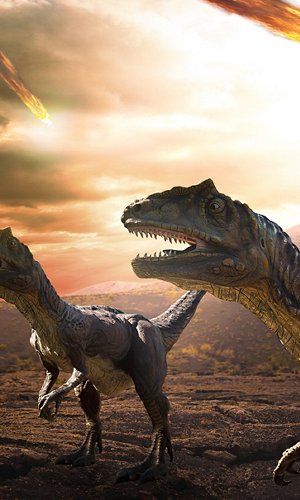An intriguing application that simulates the consequences of an asteroid impact on the planet can be found on the web. We can choose the size, from a pebble to a mountain, the composition, with more or less iron, the angle and even the point of impact. The simulator calculates the damage, the size of the crater and the frequency with which events of that magnitude occur. These are usually very long timescales, hundreds of thousands of years, even millions. Of the natural catastrophes that could cause very serious damage to our planet, and to the life on it, an asteroid impact is only the most spectacular, backed by the fact that it was a huge asteroid falling down from the sky that led to the extinction of dinosaurs 65 million years ago. However, warn researchers from the Universities of Birmingham and Cambridge in a paper recently published in the journal Nature, it is also the rarest kind of catastrophe. We should actually be more concerned about what is under our feet than what is flying over our heads. According to the British research team, a catastrophic eruption could occur within a few centuries, an eruption of such magnitude that it would make the most recent volcanoes pale into insignificance; the last major eruption, in chronological order, was in Tonga and took place in January 2022. The Hunga-Tonga-Hunga-Ha'apai submarine volcano exploded with a power comparable to that of hundreds of atomic bombs, causing a 15-metre-high tsunami and a 32-kilometre-high column of material, but fortunately no casualties. Even the largest eruption in history, that of the Mount Tambora, would be minor compared to that of a supervolcano.
Indonesia is the largest archipelagic state on Earth. Today, 250 million people live on its 17,508 islands, making it the fourth most populous country in the world. It is a geologically unstable land because it is located right where the bottom of the Indian Ocean collides and sinks beneath Asia. There are 147 volcanoes in Indonesia, 76 are active ones. In April 1815, Mount Tambora, a huge volcano on the island of Sumbawa, erupted spewing 150 billion cubic metres of ash and dust into the atmosphere. Mount Tambora was lowered by 1,300 metres from the original 4,100 to the current 2,850. It was the most catastrophic explosion in human history; the rumble was heard as far as 2000 km away. It directly killed 10,000 people and another 50,000 died from the resulting famines and epidemics. The column of ash and gas reached a height of 43 km, almost twice as high as Vesuvius when it destroyed Pompeii and Herculaneum in 79 AD. The ash projected upwards dimmed the sunlight all over the world: it was a real volcanic winter, cold and rainy, something comparable to a nuclear winter. A year after the Indonesian catastrophe, the planet's temperature plummeted. In the summer of 1816, there were sudden and abnormal frost waves. 1816 is also known as the Year without Summer; the British remember it as Eighteen hundred and froze to death. Crops throughout the northern hemisphere were destroyed and the population experienced hunger and cold.
Mount Tambora is a 'normal' volcano, one of 789 active volcanoes in the world. But what do we mean by 'supervolcano'? A supervolcano does not have a typical volcanic cone, i.e. a pointed mountain with one or more craters. They are geologically active areas tens of kilometres in diameter and recognisable by their 'secondary volcanism', i.e. not lava eruptions but geysers, fumaroles and hot springs. There are 12 supervolcanoes on Earth and, fortunately for us, they very rarely explode. The last known super-eruption was the 25,000-year-old Taupó super-eruption in New Zealand, which released 1,700 cubic kilometres of material. A long time has passed, however, the researchers warn, and it is crucial to keep an eye on the activity of all supervolcanoes in order to make contingency plans and prepare for the worst. In short, let's pay more attention to what is stirring beneath our feet than what is stirring in space.
By Andrea Bellati
Simulate an asteroid impact with the Earth: https://neal.fun/asteroid-launcher/




